Grapevine nutrition: Don’t limit the potential of your grapes
29th September 2022
A correct balance between macronutrients and micronutrients is essential to obtain the best results possible from grapevines. A deficiency of any single nutrient is enough to limit grape yield or affect grape quality and the availability of each nutrient needs to be related to the crop requirements. Yara provides the following advice on its website.
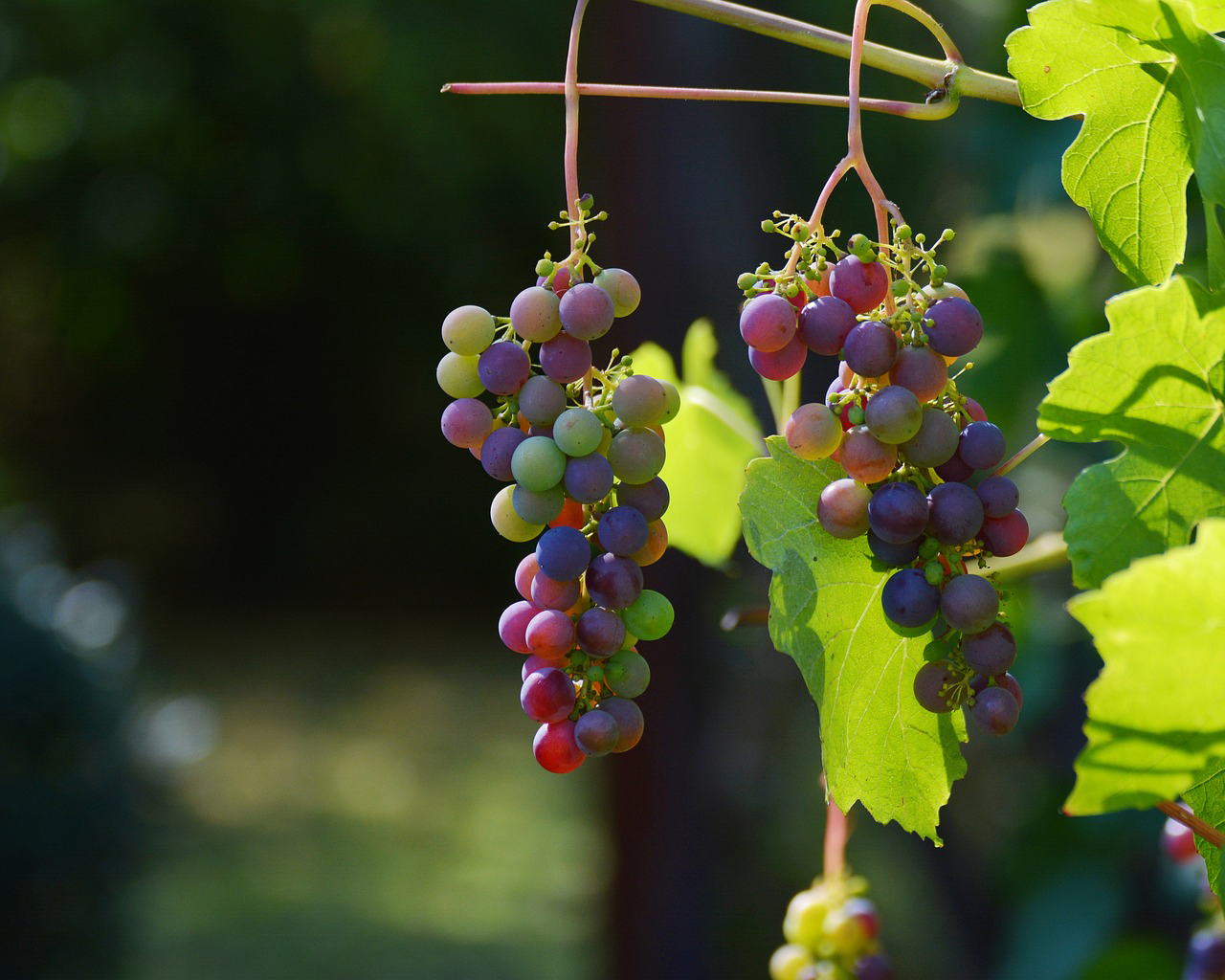
Macronutrients
Nitrogen and potassium are critical nutrients for healthy vine growth and productivity. However, both elements can encourage excessive growth and vigour resulting in shading, prolonged maturity and reduced fruit quality at later stages of growth. Peak requirements are at flowering, but both nitrogen and potassium are needed to support bud burst and leaf growth and then later in the season during grape-fill.
Nitrogen is normally applied as early as possible in the spring, post-harvest just before leaf senescence to build vine reserves, or as a combination of these two timings. This ensures that nitrogen is available at a time when soil reserves are usually insufficient to meet early season growth needs. Foliar-nitrogen can be used after bloom where additional nitrogen is needed during the growing season.
Potassium is important for fruit size development and yield. It is generally needed in greater quantities than nitrogen and often applied at similar timings. Potassium removals within grapes are also higher than those for most other elements.
In dry growing seasons – and in summer months – potassium may not be readily available to the vine. Foliar applications, notably around veraison, may be needed in low soil potassium situations (see graph 1).
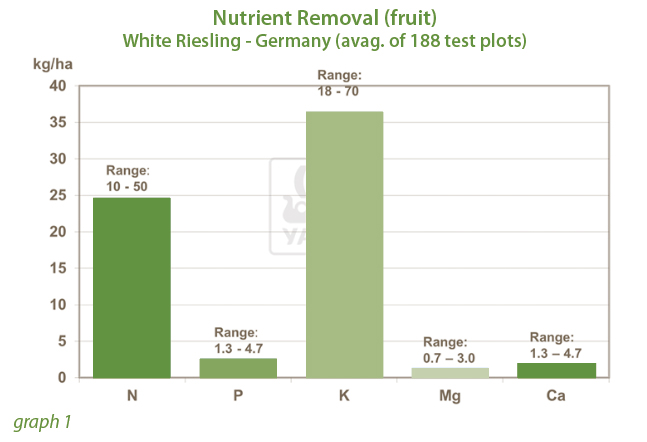
Calcium is also needed in relatively large quantities. In many situations, it is equally, if not more important than nitrogen. Nearly 40% of calcium uptake goes to leaf and branch growth and takes place between leaf emergence and the fruit set stage. Early season use of calcium nitrate will supply both these essential elements.
Magnesium deficiency can lead to premature fruit drop at harvest and while foliar sprays can correct in-season deficiencies – grape yield may already be lost as a result of a poor K:Mg balance (see figure below).
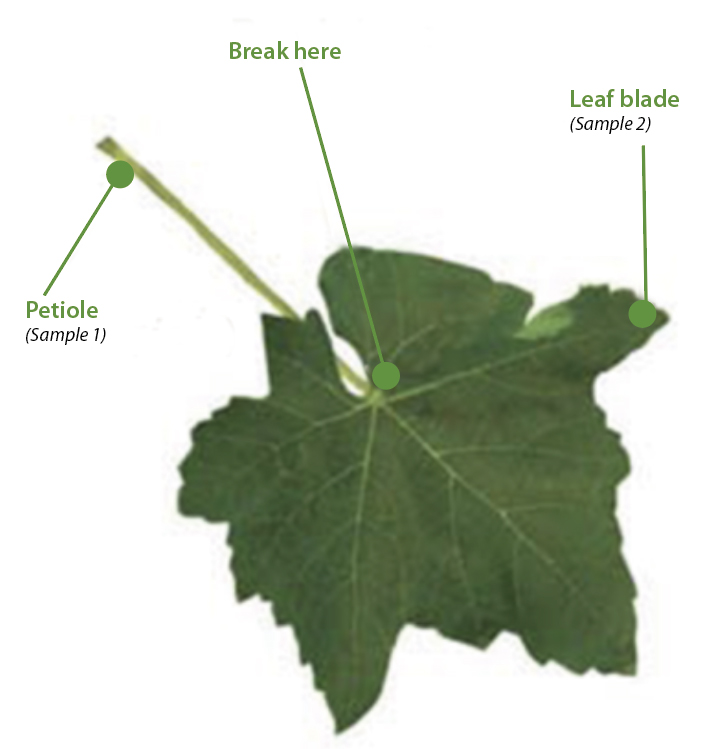
Soil-applied magnesium is the best long-term strategy to ensure this element is not limiting. Vine requirements for phosphorus are much lower and minimal maintenance programs are all that is often required (see graph 2).
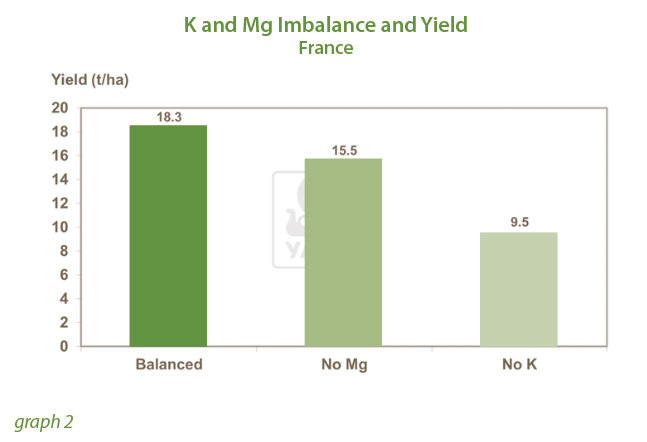
Micronutrients
While much lower levels of micronutrients are needed to satisfy grape crop production, the correct balance of these trace elements is essential, especially for high yielding crops.
More iron and zinc is taken up than any other micronutrient. A lack of iron reduces leaf growth and resultant berry size and yield. Zinc deficiencies can be a serious problem causing poor fruit set and stunted shoots with small, misshapen leaves.
Foliar application or fertigation helps minimise in-season micronutrient deficiencies by quickly correcting the problem. Dry applied manganese and zinc, for example, become complex and are taken up more slowly. Micronutrients applied via fertigation should be as chelates, thereby maintaining good availability to vine roots.
Balanced nutrition
While there is some debate on the precise requirements of individual nutrients, there is no doubting the importance of the right balance of all major- and micro-nutrients. An example is potassium and magnesium. If one is out of balance with the other, then yield and wine quality will suffer (see graph 3).
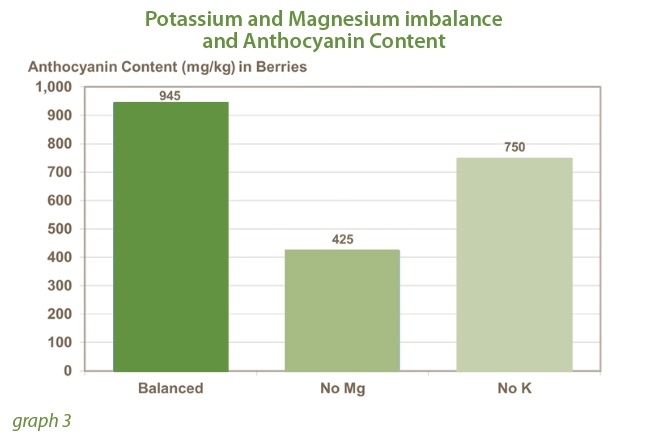
Determining nutrient need
Soil tests can be used to assess soil pH, organic matter content and cation exchange capacity (CEC), thereby indicating nutrient availability and the nutrient retention characteristics of the soil. They are used to assess levels of soil potassium and phosphorus and also to provide an indication of likely cationic imbalances, e.g. K:Ca:Mg ratios. Lime need can be assessed from the soil test. However, soil tests are not a good indicator of nitrogen requirement.
Plant analysis provides a more accurate, immediate assessment of the nutrient status of the vine. It will also confirm hidden deficiencies where plant symptoms have yet to be seen and accurately identify the balance between needed elements.
Various countries use either the whole leaf (French method) the petiole on its own (Californian method), or just the leaf blade (South African method), to check for nutrient status. Most common practice is to test at veraison or the end of flowering.
Some systems suggest sampling at both stages. At least 30 samples of leaves/petioles closest to the bunch are needed.
To learn more visit: www.yara.com/crop-nutrition/
